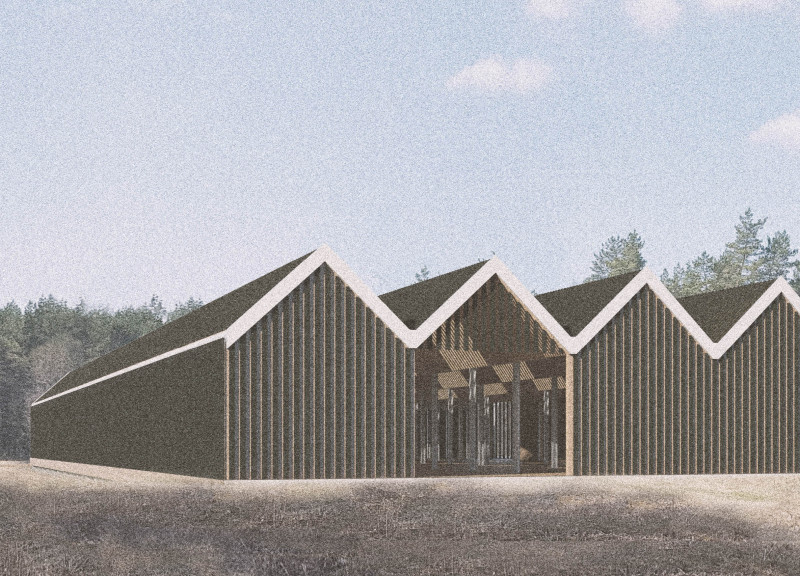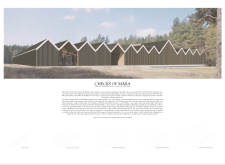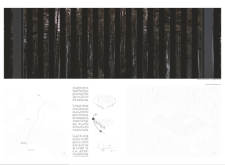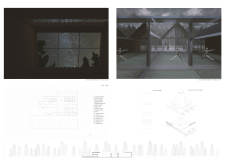5 key facts about this project
The Checks of Māra Visitor Center is located in the Great Kemeri Bog National Park in Latvia, a region known for its diverse ecosystems that include forests and ancient raised bogs. The center serves as a gathering place for visitors, celebrating the local mythology of Māra, the goddess of earth and water. The design emphasizes a connection between people and nature, reflecting the essential elements of land and water through its architectural forms and engaging spaces.
Conceptual Framework
The design draws inspiration from the duality of Māra, symbolizing both the Mother of Waters and the Mother of the Land. This idea shapes how the building is organized, allowing visitors to experience different areas that reflect the natural environment of the bogs. Spaces such as exhibition rooms and communal areas around a fire promote exploration and contemplation, helping to immerse visitors in the unique landscape surrounding them.
Environmental Integration
The building’s orientation considers local environmental factors, including wind and sunlight. This thoughtful arrangement promotes natural airflow and reduces energy consumption. The design takes advantage of the forest canopy, which provides shade across various seasons. By creating comfortable gathering places and intimate spaces, the building encourages visitors to connect with the landscape in a relaxed manner.
Water Management
An important feature of the Visitor Center is its efficient rainwater collection system, which aligns with sustainable design principles. Rainwater is guided by the roof into concealed eaves and flows down through structural pillars into underground tanks. This system allows for water filtration and reuse, demonstrating a commitment to reducing the ecological impact of the building while integrating it with the local environment.
As visitors move through the building and ascend to the observation terraces, they are met with wide views of the bog landscape. This elevation enhances their connection to the surroundings. The terraces encourage interaction, providing one area for enjoying the scenery and another for engaging in activities like piloting drones, aligning with the center's goal of actively involving visitors in appreciating the cultural and natural heritage of the region.






















































